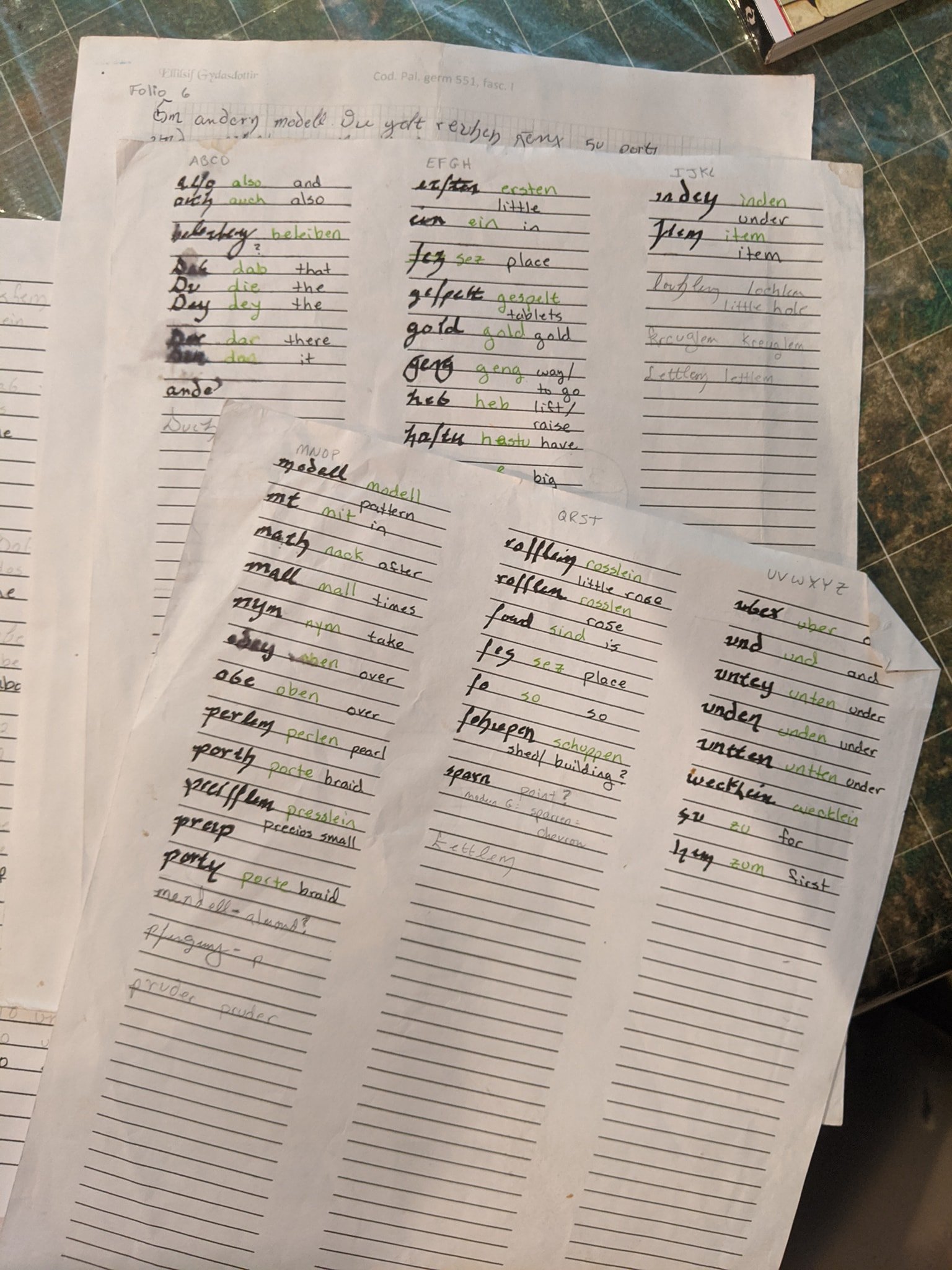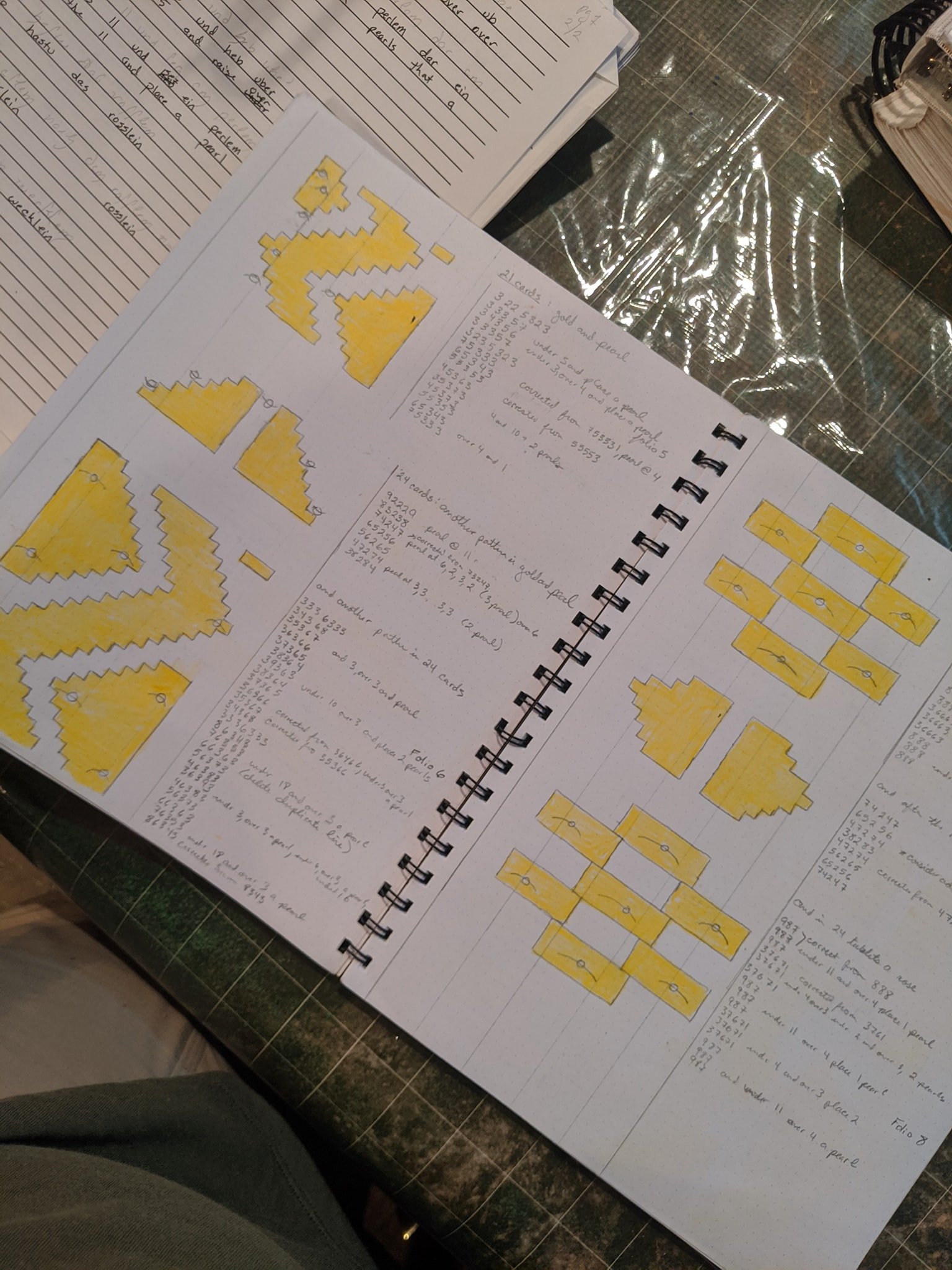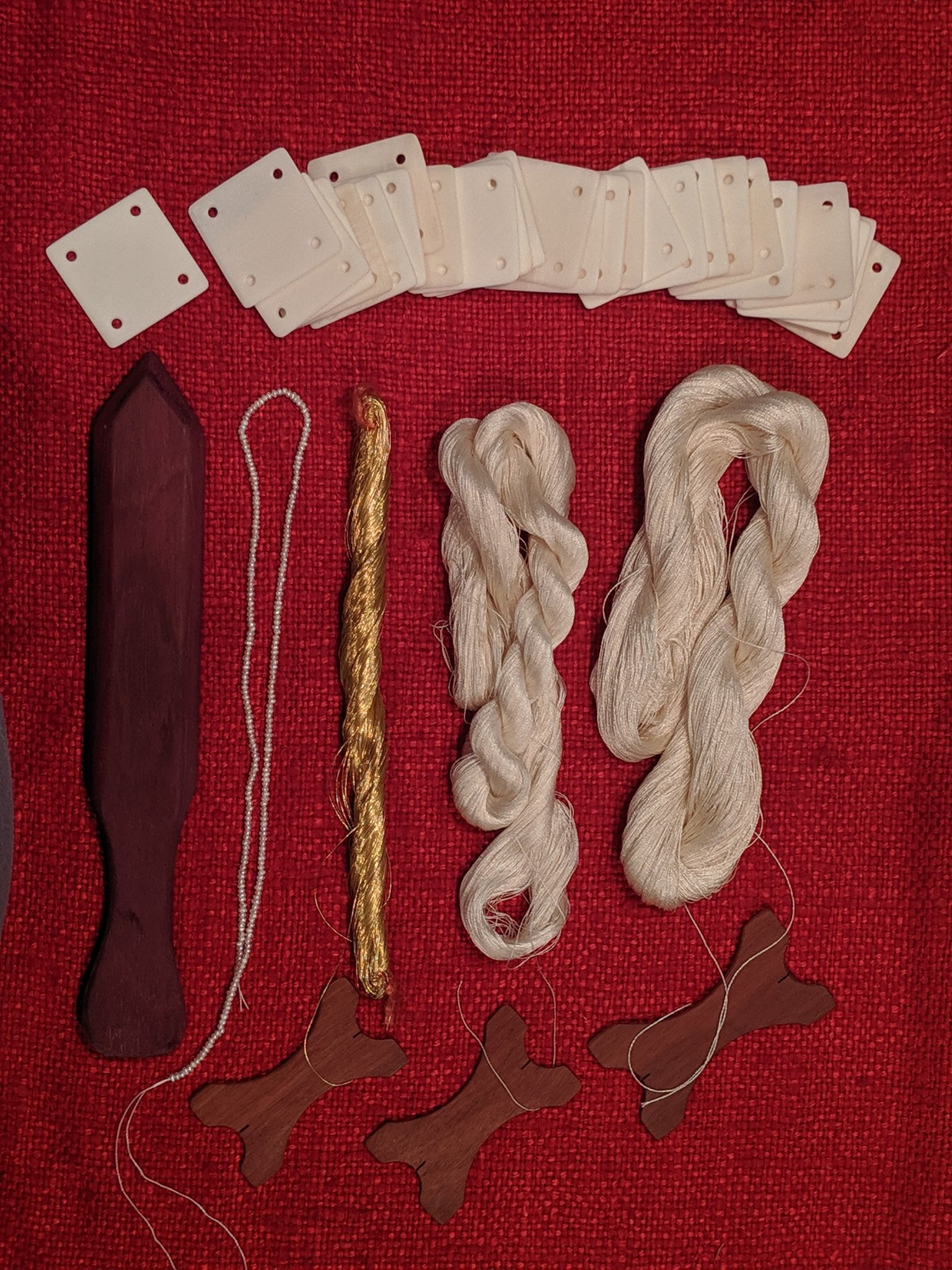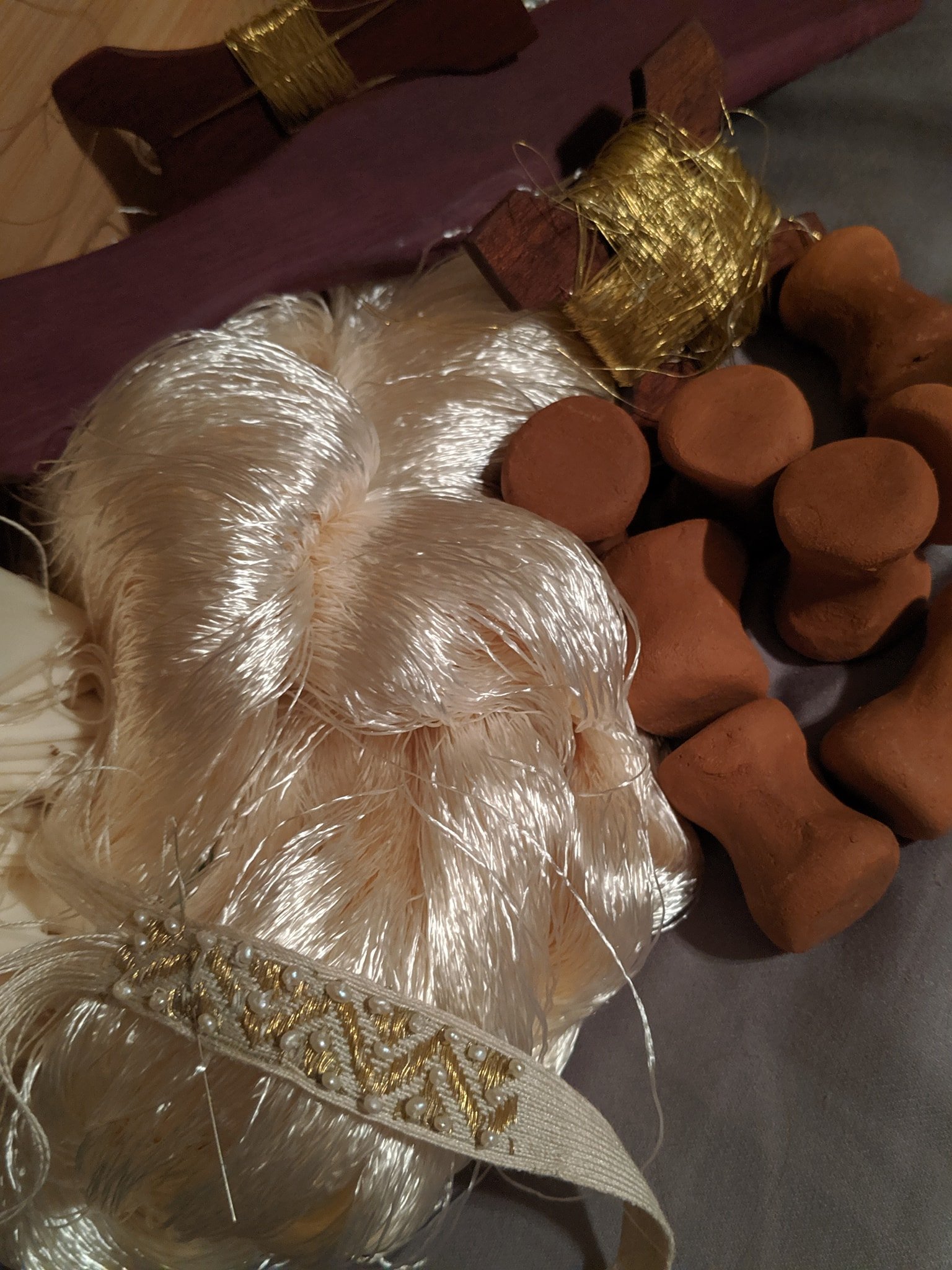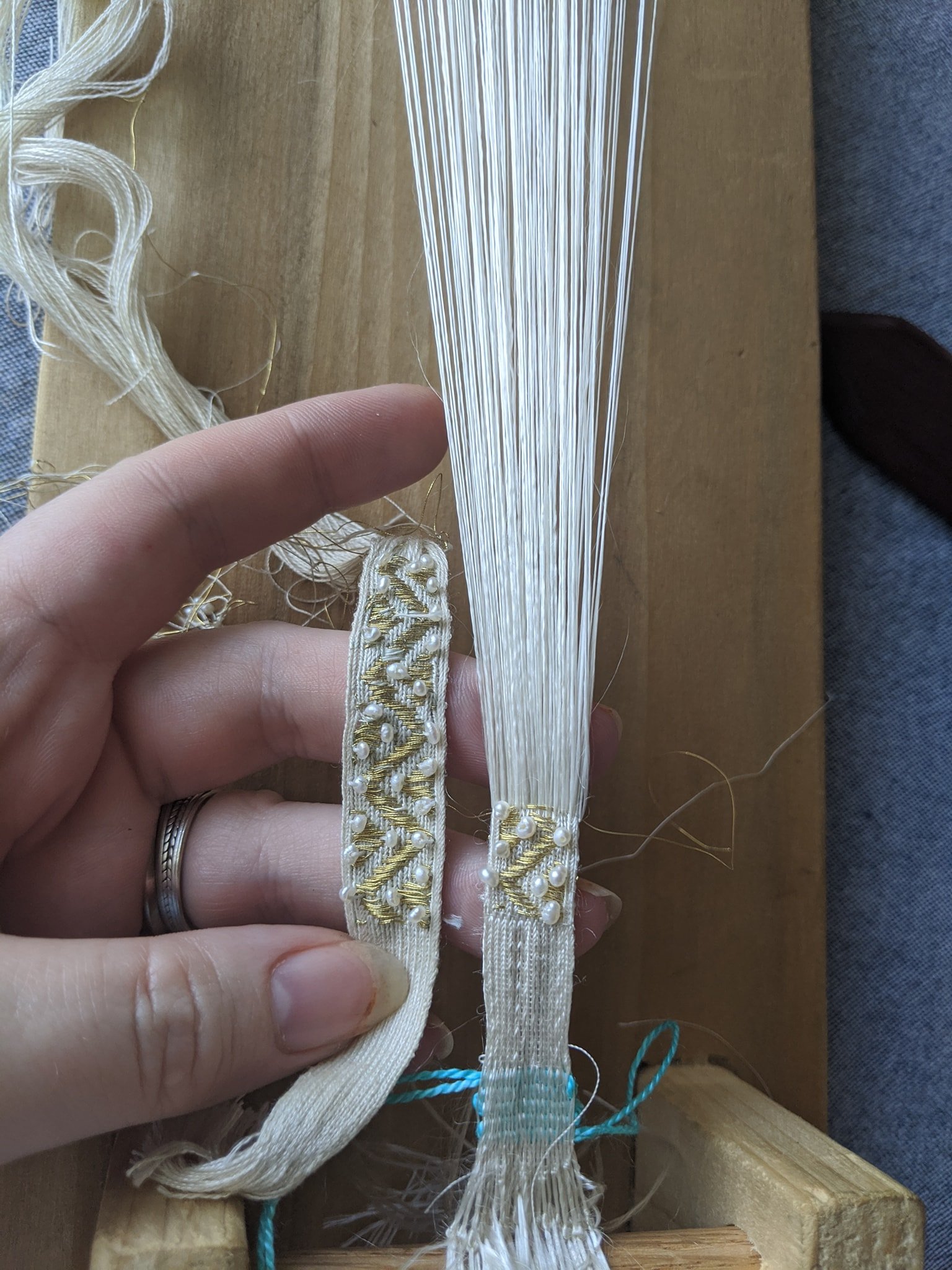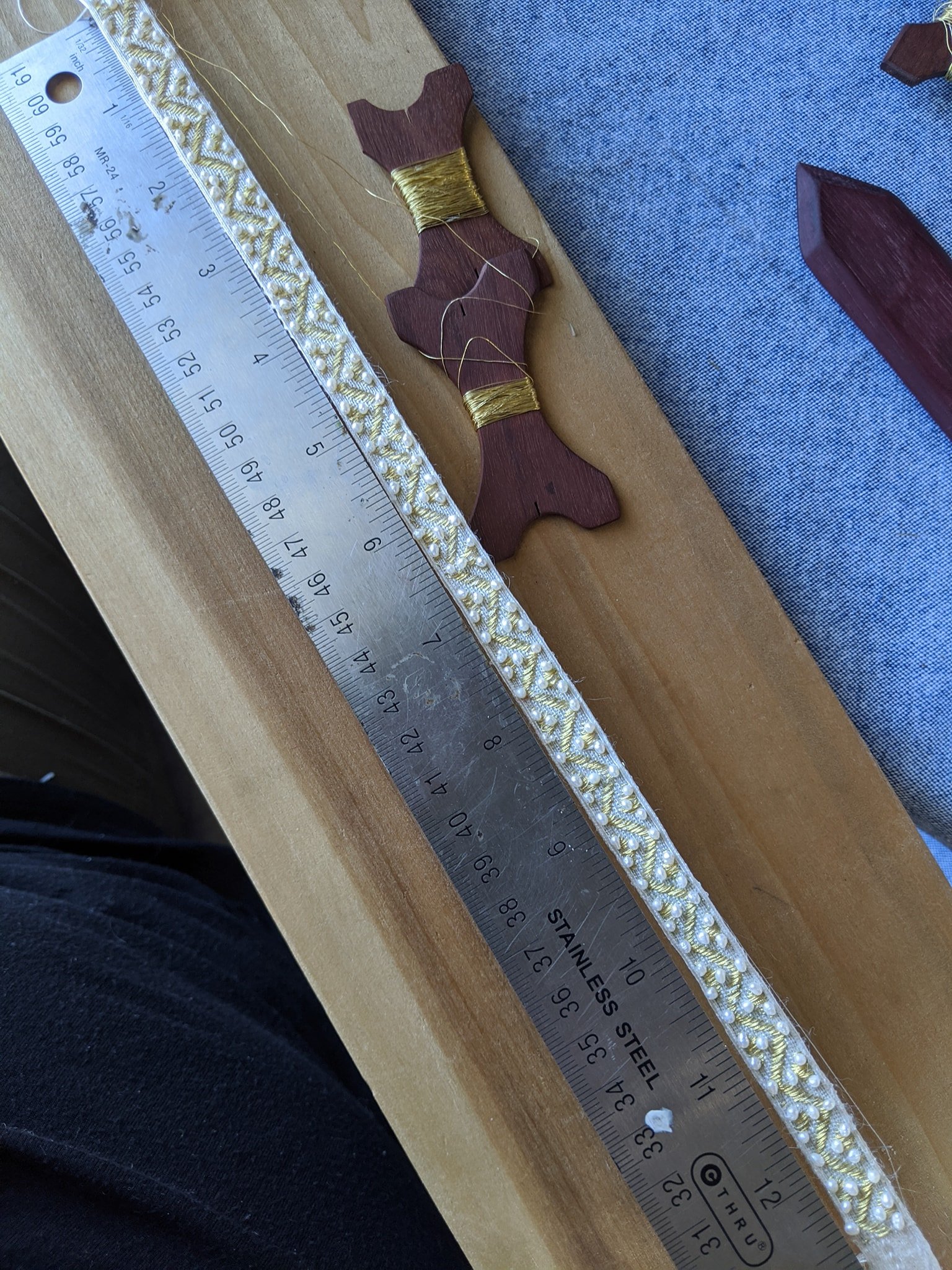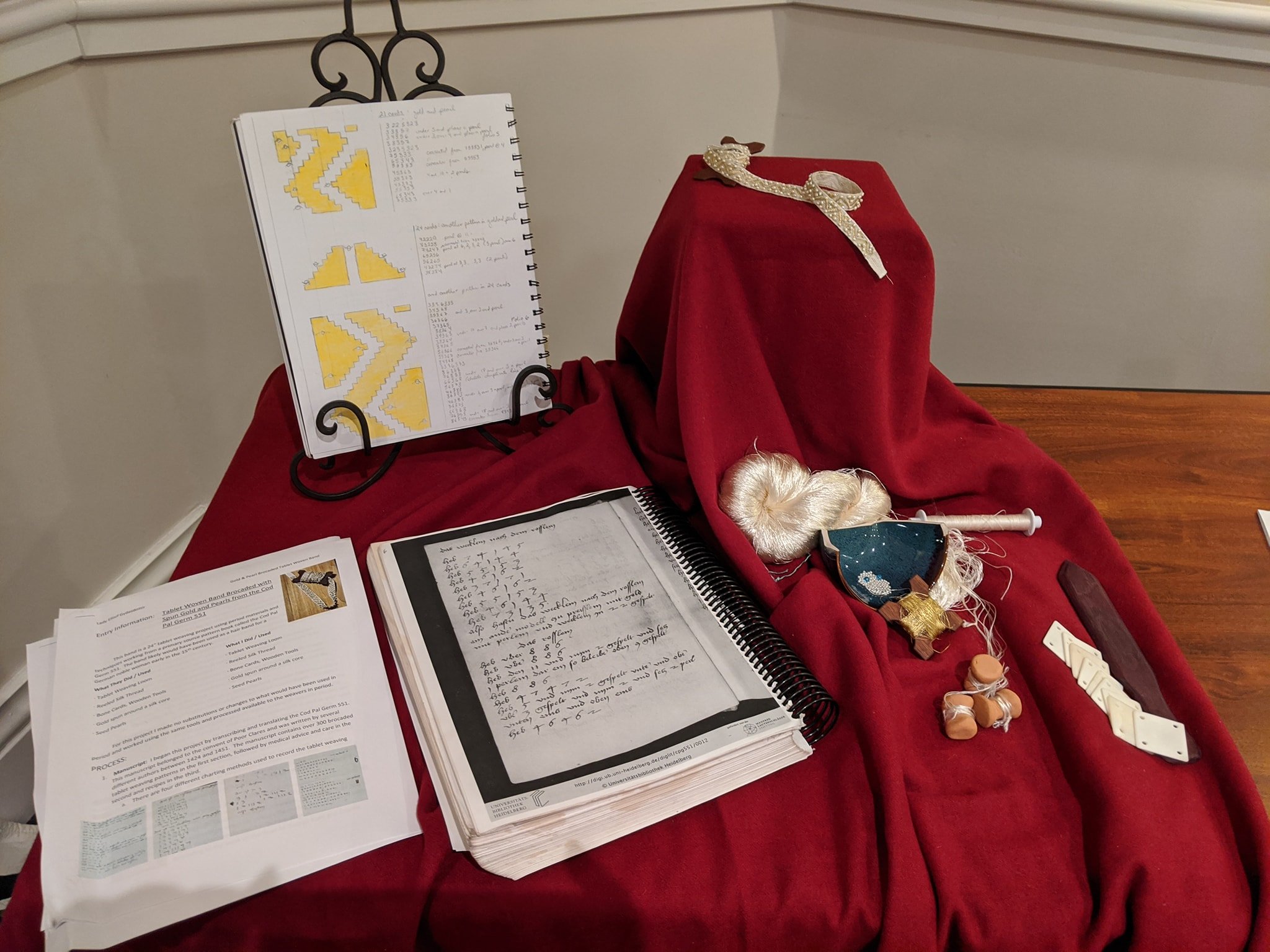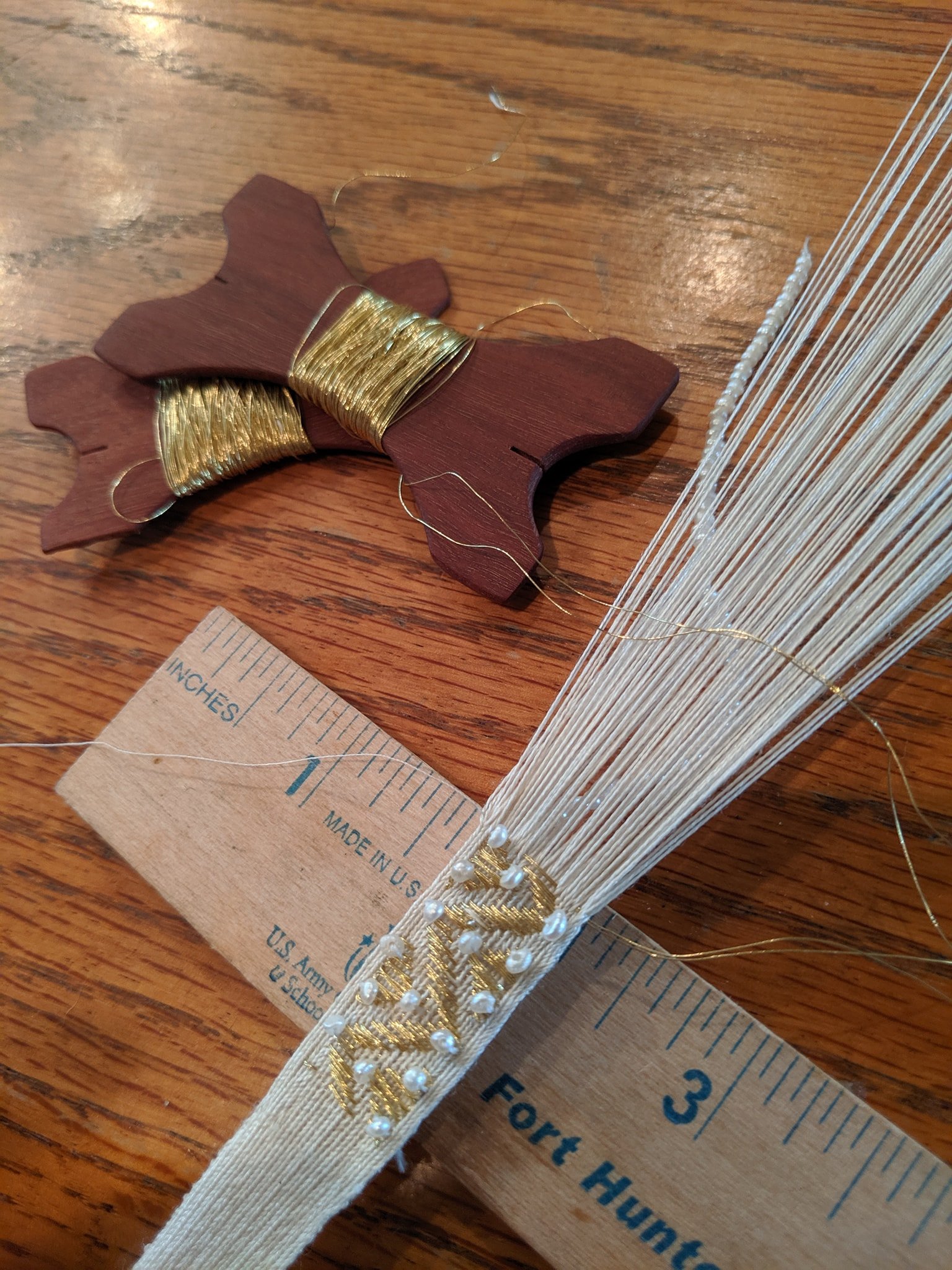Cod Pal Germ 551
I am incredibly excited to tell you about a project I have been working on! The Heidelberg University has scanned in a full German manuscript from 1471 that includes a treasure of brocade patterns. Including patterns for beading with pearls! The manuscript is in excellent condition, and the scans are very detailed.
When I first began researching this book I wanted to really “see” the patterns, so began by just transcribing them onto a graph style instead of the numbers format used in the book. This allows us to see a picture of the design and is a method more commonly used today. I went through the first 200 pages of the manuscript this way. I printed graph paper, but then worked entirely by hand. Here is a preview of those graphs:
I also wove a selection of the designs. Initially I chose designs that were error free and repeated easily. I sampled these using 60/2 silk dyed a dark blue with a 2/20 silk brocade thread in light gold. I am using wooden cards, and a simple U shaped wooden loom. The 15th century painting of a woman brocading in the Book that fist Jehan BOCAC de Certalde of the cleres and noble women, which he sent to Audice de Accioroles of Florence, Countess of Haulteville guided my selection of loom, cards, wooden weaving swords, and wooden bobbins.
I had a theory that I had actually patterned the bands backwards – what I had charted as brocade was the ground threads and vice versa. Through the assistance of Mistress Drea translating the German text in the manuscript, I was able to confirm my theory.
Meeting people who could help with the German text made this project even more exciting, and I decided to start again at the beginning. Already I was recognizing patterns of words that repeated themselves and with an actual translator to help a whole new world of options quickly opened up.
My goal with the project is to end up with a hand written manuscript that is easily understood, and to the best of my ability, true to the intentions of the original writers.
Continuing my research on the Cod. Pal. germ 551 I have a theory about the pearl placement as described in the first section of the book.
The first several patterns are described as roses, rosebuds, or little roses along with a “wecklein” for each which looks like a leaf or stem. I don’t have a good translation for that word yet.
Most of these roses have lines describing where the pearls are to be inserted in the band, and these come in two very distinct fashions.
Type 1 reads like this: Raise 9 tablets, take the 10th and place one pearl therein.
Very simple right? The one note is that “raise above” means the warp thread on top, not the brocade thread. Otherwise this is an incredibly simple description of where exactly to place the pearl on that line.
Type 2 reads like this: Raise 3 tablets, and take 2 under and over 3 tablets and take 2 tablets and place a pearl therein.
This is a much more complex explanation and is what is the basis of my theory.
The pearl-holding thread could also be a decorative element in the band.
In which case, I would take my brocade thread inside the warp for 3 tablets, over the warp for 2, back under for 3, and then place my pearl. This would create an additional brocade thread on top of the warp.
Evidence: While there are no actual extant bands from this book (to the best of my knowledge) there are bands from the same time period that use multiple colors of brocade thread to create and accent patterns. One example is the 15th century band on the chausible at the Ösmo church, Stockholm, Sweden. (http://historiska.se/upptack-historien/object/95622-masshake-av-textil/).
Additionally, we see a very common standard of balanced patterns in embroidery, weaving, and trim throughout this period. The patterns themselves are evenly balanced from side to side. Ignoring the extra over and under steps results in a band with pearls lumped on one side and the other left blank. While it can be erroneous to apply modern sensibilities to period taste, 180 pages of patterns in this exact manuscript show a preference for evenly balanced designs.



